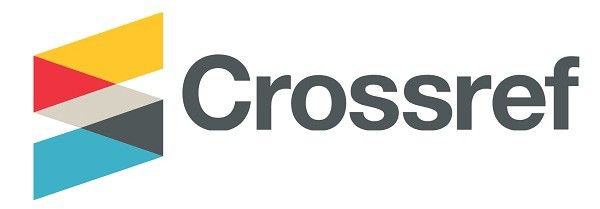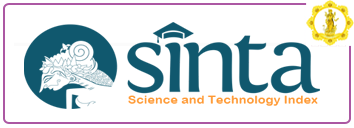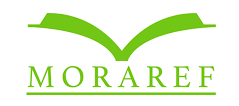Philippine Qualifications Framework and South Korea’s New Southern Policy: Towards Quality Tech-Voc Education
DOI:
https://doi.org/10.25078/jpm.v7i1.1953Keywords:
Tech-Voc Education, Policy, Qualifications, QualityAbstract
This study is an attempt to revisit the Philippine Qualifications Framework (PQF) vis-à-vis South Korea’s New Southern Policy (NSP). The focus is on the tech-voc education given PQF mandates concerning NSP’s agenda. The PQF-NSP alignment in the context of tech-voc is emphasized as inputs are provided towards quality tech-voc education in the Philippines. This qualitative study uses policy document analysis as a methodology, primarily involving PQF and NSP. According to Cardno (2018), policy document analysis is a significant instrument for leaders in the education sector as it also functions as a research technique. Policies are accessed through retrieval from website searches (Patel, et al., 2017). Harmonizing mandates provisions, and agenda of the NSP and PQF provides clear-cut directions towards quality tech-voc education in the Philippines. Institutionalizing qualifications and standards through the PQF serve as a mechanism to complement existing practices not just in the country but in the ASEAN region as well. As PQF acts as an instrument to advance policy planning, creation, and implementation, the Philippines affirms its role in contributing to the region’s qualifications framework by gaining recognition and impact. This is a prime invitation for NSP to maximize and be an active partner in upholding quality and standards, and in this case, through the context of tech-voc education.
Downloads
References
Arifin, Z., Nurtanto, M., Warju, W., Rabiman, R., & Kholifah, N. (2020). The TAWOCK conceptual model at content knowledge for professional teaching in vocational education. Int. J. Eval. & Res. Educ. Vol, 9(3), 697-703.
Buan, N. (2020). Capacitating TESDA As A Workforce of Tomorrow. Available at SSRN 3697807.
Cardno, C. (2018). Policy document analysis: A practical educational leadership tool and a qualitative research method. Educational Administration: Theory & Practice, 24(4), 623-640.
Choi, I. (2020). ASEAN Outlook on the Indo-Pacific (AOIP) and Korea’s New Southern Policy. [KIEP Opinions]. Korea Institute for International Economic Policy. https://www.think-asia.org/bitstream/handle/11540/11839/KIEP%20opinions_no183.pdf?sequence=1
Choi, S. J., Jeong, J. C., & Kim, S. N. (2019). Impact of vocational education and training on adult skills and employment: An applied multilevel analysis. International Journal of Educational Development, 66, 129-138.
Dobrzanski, P., & Bobowski, S. (2020). The Efficiency of R&D Expenditures in ASEAN Countries. Sustainability, 12(7), 2686.
Forster, A. G., & Bol, T. (2018). Vocational education and employment over the life course using a new measure of occupational specificity. Social Science Research, 70, 176-197.
Forster, A. G., Bol, T., & Van de Werfhorst, H. G. (2016). Vocational education and employment over the life cycle. Sociological Science, 3, 473-494.
Ha, H., and Ong, G. (2020). Assessing the ROK’s New Southern Policy towards ASEAN. ISEAS Yusof Ishak Institute. https://www.iseas.edu.sg/wp-content/uploads/2015/07/ISEAS_Perspective_2020_7.pdf
Hanushek, E. A., Schwerdt, G., Woessmann, L., & Zhang, L. (2017). General education, vocational education, and labor-market outcomes over the lifecycle. Journal of human resources, 52(1), 48-87.
Jossberger, H., Brand-Gruwel, S., van de Wiel, M. W., & Boshuizen, H. (2018). Learning in workplace simulations in vocational education: A student perspective. Vocations and Learning, 11(2), 179-204.
Kayesa, N. K., & Shung-King, M. (2020). The role of document analysis in health policy analysis studies in low and middle-income countries: Lessons for HPA researchers from a qualitative systematic review. Health Policy OPEN, 100024.
Kwak, S. & Lim, M. (2019). The Growth of the ASEAN Infrastructure Market and Its Implications for Policy Makers in Korea. [Policy brief]. Korea Institute for International Economic Policy. https://www.think-asia.org/bitstream/handle/11540/10779/WEB19-13.pdf?sequence=1.
Lee, J. (2020). A Need to Rethink Peace Cooperation in Korea’s New Southern Policy. [Asia Pacific Bulletin]. East-West Center. https://scholarspace.manoa.hawaii.edu/bitstream/10125/69092/1/apb%20no.514.pdf.
Lund, H. B., & Karlsen, A. (2020). The importance of vocational education institutions in manufacturing regions: adding content to a broad definition of regional innovation systems. Industry and Innovation, 27(6), 660-679.
McGrath, S., & Powell, L. (2016). Skills for sustainable development: Transforming vocational education and training beyond 2015. International Journal of Educational Development, 50, 12-19.
New Southern Policy. (2020). http://www.nsp.go.kr.
Oh, Y. (2020). Korea’s New Southern Policy: Progress, Problems, and Prospects. [Asia Pacific Bulletin]. East-West Center. https://scholarspace.manoa.hawaii.edu/b itstream/10125/69091/1/apb%20no.513.pdf.
Ozer, M., & Perc, M. (2020). Dreams and realities of school tracking and vocational education. Palgrave Communications, 6(1), 1-7.
Patel, A., Prabhakaran, D., Berendsen, M., Mohanan, P. P., & Huffman, M. D. (2017). Pre-hospital policies for the care of patients with acute coronary syndromes in India: a policy document analysis. Indian heart journal, 69, S12-S19.
Persson Thunqvist, D., Hagen Tønder, A., & Reegård, K. (2019). A tale of two reforms: Institutional change in vocational education and training in Norway and Sweden in the 1990s. European Educational Research Journal, 18(3), 298-313.
Philippine Qualifications Framework. (2020). pqf.gov.ph.
Philippine Statistics Authority. (202). https://psa.gov.ph.
Sorolla, R. M. (2017). The Philippine TVET Qualification System: Issues and Concerns for Implementation. Quality TVET in Asia Pacific Region: National Vocational Qualification Systems of CPSC Member Countries, 45.
TESDA. (2020). tesda.gov.ph
Yulastri, A., & Hidayat, H. (2017). Developing an Entrepreneurship Module by Using Product-Based Learning Approach in Vocational Education. International Journal of Environmental and Science Education, 12(5), 1097-1109.









